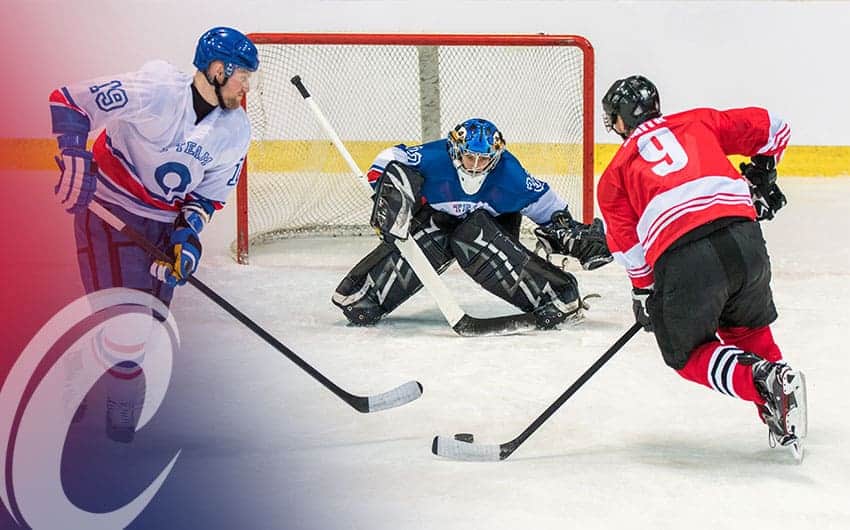We often see social media posts of athletes lifting massive weights in an attempt to get bigger muscles. Many young hockey players see these posts and want to do the same – get huge muscles because they think it will make them better hockey players. Well unfortunately, that’s not necessarily true. Today’s hockey player needs to be quick, agile, and stable enough to ward off a defender in order to be successful. Getting “hockey strong” doesn’t have to mean getting huge muscles, it means getting stronger in order to be a better player. Isn’t that the goal of off ice training, to become a better player on the ice?
So where do we start? For one, look at how the game is played. Most of the game is played on one leg or in a split position. So, if the game is mainly played in those positions, then why do we primarily strengthen in a two-legged stance such as a squat or deadlift? Performing exercises on one leg or in a split stance will mimic positions an athlete will be in during competition. Strengthening in these positions will also improve balance and provide a solid base for the athlete when warding off a defender or loading for a shot. Examples of these exercises include single leg squats where an athlete stands on one leg and squats down in a similar position as a traditional squat, or a rear foot elevated split squat where one foot is placed on a bench behind you and you lower the body on the other foot. With a rear foot elevated split squat, the non weight bearing foot can supply some stability allowing for more weight to lifted.
 Core stability is nothing new to dryland training, but we often see most of these exercises performed lying down. This probably isn’t the position a player wants to be on the ice. This isn’t to say that they can’t be beneficial, but we also need to include core exercises in an upright position. Think about trying to take a slap shot on the ice with shoes on instead of skates or checking an opponent with shoes on when they have skates on. Without skates, your base of support isn’t there and you probably won’t be too successful. The following examples are designed to provide a stable base of support for the upper body. The pallof press is an anti-rotational exercise where you stand in an athletic position pressing a band away from your body, resisting rotation or being pulled back towards the base where the band is attached at a 90 degrees angle from the direction you are facing. The medicine ball rotation throw starts in either an athletic position or split position and you rotate and throw a medicine ball off a wall like you are taking a shot on the ice.
Core stability is nothing new to dryland training, but we often see most of these exercises performed lying down. This probably isn’t the position a player wants to be on the ice. This isn’t to say that they can’t be beneficial, but we also need to include core exercises in an upright position. Think about trying to take a slap shot on the ice with shoes on instead of skates or checking an opponent with shoes on when they have skates on. Without skates, your base of support isn’t there and you probably won’t be too successful. The following examples are designed to provide a stable base of support for the upper body. The pallof press is an anti-rotational exercise where you stand in an athletic position pressing a band away from your body, resisting rotation or being pulled back towards the base where the band is attached at a 90 degrees angle from the direction you are facing. The medicine ball rotation throw starts in either an athletic position or split position and you rotate and throw a medicine ball off a wall like you are taking a shot on the ice.
In summary, you do not have to lift excessive weights in order to get bigger and stronger. What’s important is that you lift the proper weights in the right positions. Again, we train to become a better hockey player, not a better lifter.
Chris Phillips is an Athletic Trainer and Strength and Conditioning Specialist with over 15 years experience in professional hockey including 8 years in the NHL with the Ducks and Capitals. Chris is the owner of Compete Sports Performance and Rehab in Orange County, CA. He can be reached at chris@competeperformance.com

